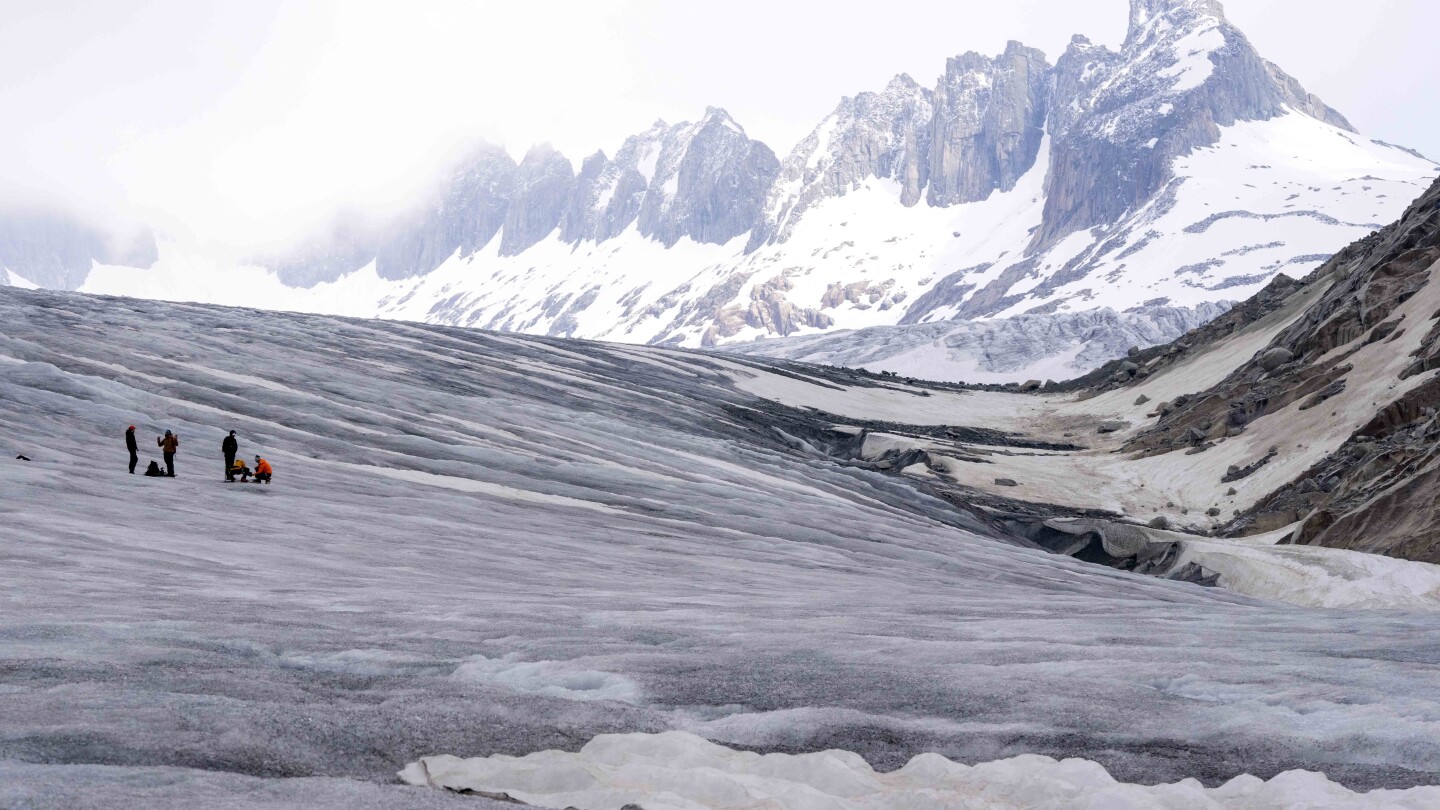GENEVA (AP) — A top glacier watcher has warned that a warm early summer combined with a heat wave last week may have caused severe glacier melt in Switzerland, threatening to make 2023 its second-worst year for ice loss after a record thaw last year.
Matthias Huss of the GLAMOS glacier monitoring center said full data won’t be in until late September and a precipitous drop in temperatures and high-altitude snowfall in recent days could help stem any more damage.
But early signs based on readings from five sites and modeling results across Switzerland suggest considerable damage may already be done.
“We can definitely say that we had very high melting in Switzerland and in Europe in general because the temperatures, they were extremely high for a long time — a more than one week heat wave,” Huss said in an interview this week.
Swiss meteorologists reported last week that the zero-degree Celsius level had risen to its highest altitude since recordings on it in Switzerland began nearly 70 years ago — meaning that all of the Alpine country’s mountains faced temperatures above freezing.
The late-summer heat wave was particularly harmful to glaciers this year because high temperatures earlier in the summer had already melted nearly all of the protective snow cover, which meant that “almost all glacier ice was kind of naked,” Huss said.
A blanket of white snow cover has a crucial effect in protecting glaciers by reflecting energy from sunlight back upward, a process known as the albedo effect.
Last year marked a historically punishing year for Switzerland’s estimated 1,400 glaciers — the largest count of any country in Europe, and a bellwether for the impacts of climate change.
“We’re definitely not going to beat the records of last year … but right now, it seems that we’re on track to be maybe the second-most negative year,” Huss said.
A combination of factors made for a near-perfect storm in 2022 including low wintertime snow cover, warm temperatures in early summer, greater heat later that season, and weather patterns that carried orange-colored dust from the Sahara Desert up to Switzerland — coloring the snow and ice.
A staggering 6% of glacier volume in Switzerland was lost in that single year.
“For comparison, we lost, on average, about 2% in the last decade, and already 2% is very high,” said Huss. “If you extrapolate that, that would tell you that in 50 years we have nothing left. If we lose 6% in one year, it’s even much more extreme.”
Strong melting and glacier disappearance in recent years has already caused Huss’ team to halt three of its 20 monitoring programs where detailed measurements are taken. This year, one was ended at the Saint Annafirn glacier, south of the central village of Andermatt, because measurements there were no longer meaningful, he said.
“The glacier is so small by now, and dangerous, because it has receded so much that there is a lot of rock fall,” he said.
With areas like the town of Zermatt, at the foot of the Matterhorn, hitting 31 degrees Celsius (88 Fahrenheit) last week, the impacts will continue to be felt.
“We can say it’s climate change that makes these years with very strong melting much more likely,” said Huss. “In the last decades, I would say that almost every year is kind of an extreme year.”

